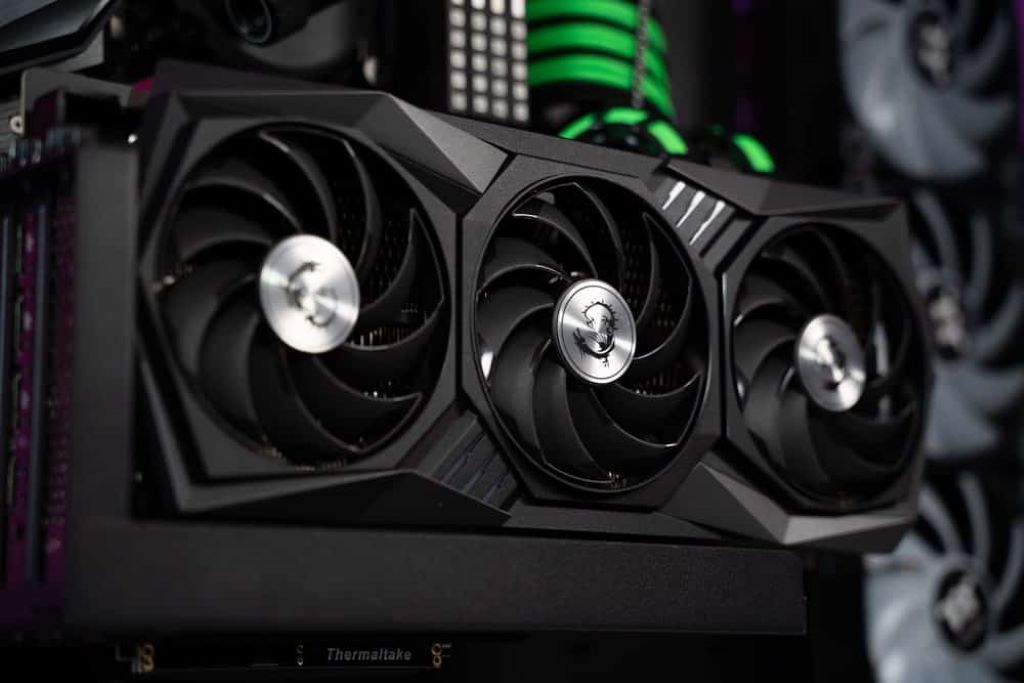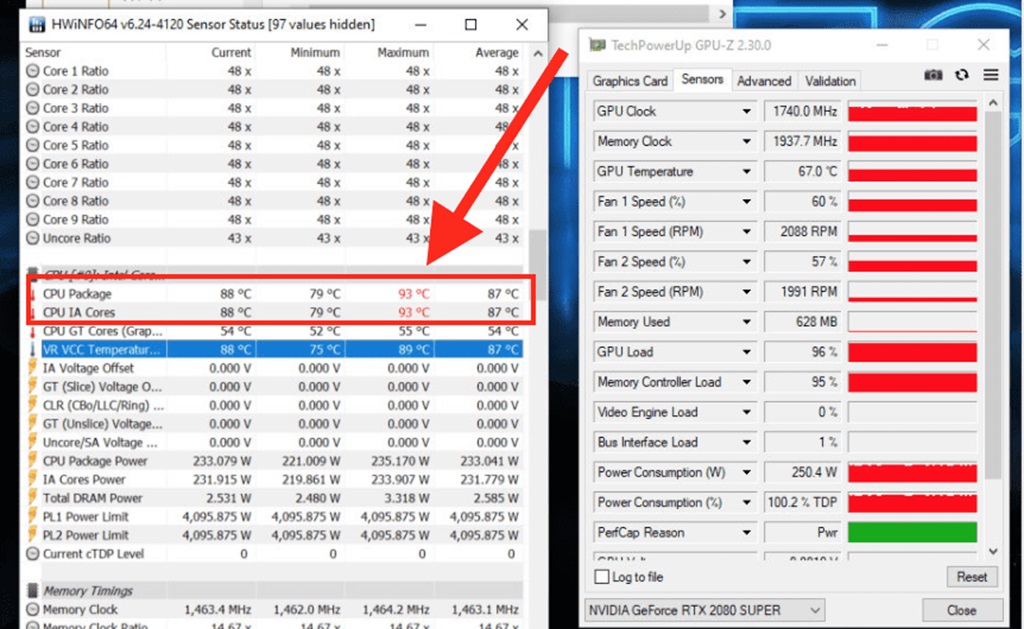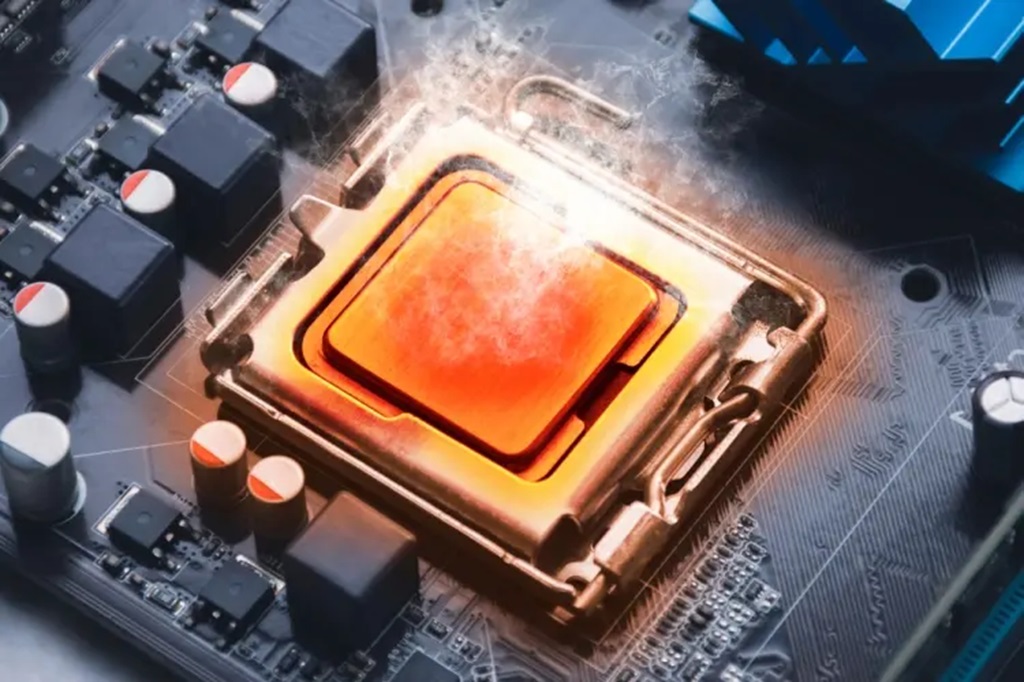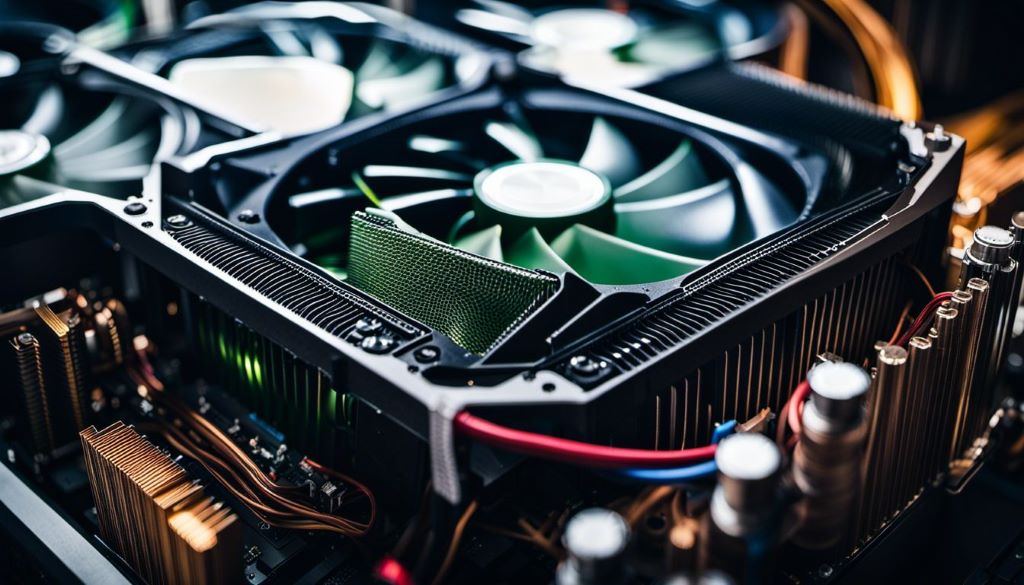Alright, let’s talk about one of the most common questions PC gamers have: What are normal CPU temps when gaming? I know when I first built my rig I was super anxious about temperatures and constantly monitored the littlest changes. But the truth is, you don’t need to obsess over every minor fluctuation. As long as your temps stay within a safe range when gaming, you’re pretty much golden. The trick is knowing what that ideal range is. Different CPUs have different temperature thresholds before throttle-down or damage occurs. But a good general guideline is to keep gaming CPU temps under 80°C if possible. Spikes somewhat above this are OK, but sustained temps over 80°C may cause performance issues or shorten your hardware’s lifespan.
Of course, achieving good temps depends on several variables, like your CPU model, cooler, thermal paste application, case airflow, ambient temps, game demand on the CPU, etc. But let’s explore the average CPU temperatures you can expect while gaming based on different factors.
CPU Model Matters
Not all CPUs run equally hot, even among the same generation or brand. Higher-end CPUs aimed at enthusiasts tend to run warmer because they pack more cores and higher clocks that churn out more heat:
- A 65W Ryzen 5 5600X will run cooler than a 105W Ryzen 9 5900X.
- Likewise, an i5-12600K runs cooler than the beefier i9-12900K.
High-end CPUs sacrifice lower thermals for better performance. So higher gaming temps in the 70°C+ range are more expected.
Lower-power CPUs usually max out below 70°C since complex workloads like games don’t push these chips as hard. Budget-focused CPUs also tend to have lower heat output.
Of course, your cooling solution still makes a big difference (more on that next). But the CPU TDP (thermal design power) gives you a hint of how hot a chip might run when gaming. Higher TDP = more heat generated.

Your CPU Cooler Is Key
The kind of CPU cooler you use heavily influences thermals. All else being equal, a tower air cooler or beefy AIO liquid cooler will run multiple degrees cooler than a basic air cooler or 120mm AIO during gaming.
Also consider your case and its airflow. Cases with solid front panels restrict intake airflow, causing hotter temps. Well-ventilated cases with mesh fronts allow much better airflow and lower temperatures.
Here’s a general guideline for average gaming CPU temps based on the cooler:
- Stock Air Cooler: 60-80°C
- 120mm AIO or Tower Air Cooler: 50-70°C
- 240-280mm AIO or High-End Air Cooler: 40-60°C
- 360mm AIO or Custom Loop: 30-50°C
Of course, factors like your specific CPU, case, ambient temp, game, etc. still cause variance. But a more capable cooler directly results in better thermals.
Many people don’t realize just how much of an impact the CPU cooler makes. I ditched my stock Ryzen cooler for a beefy air cooler and saw a 20°C drop in average gaming temps!

Thermal Paste Application Matters Too
While shopping for a shiny new cooler, don’t neglect the humble thermal paste! Applying quality paste properly ensures optimal heat transfer between your CPU and cooler cold plate.
Too much or too little paste ends up increasing temperatures. Just a small blobs in the center of the CPU about the size of a grain of rice is perfect.
I once forgot to remove the pre-applied paste’s plastic film and saw temps 15°C higher. Rookie mistake I know…But properly applying fresh paste dropped me back into the safe zone.
So before you panic about temps, double check your paste application. Doing it right makes a couple degree difference.
Game Loading Impacts Temps
The specific game and what’s happening on screen also influences CPU temperatures quite a bit. Esports titles like Valorant or Rocket League that are easy to run barely touch my CPU temps.
But more demanding AAA games load the entire system harder, especially the CPU. And certain games are worse culprits when it comes to heating up your processor.
Games like Assassin’s Creed Odyssey, Watch Dogs Legion, Far Cry 6, Cyberpunk 2077, and Microsoft Flight Sim really cook CPUs with all the AI and physics calculations behind the scenes. Others like Red Dead Redemption 2 and Horizon Zero Dawn also work CPUs hard.
For these types of games, peak core temps in the 70-80°C range are more typical, even with high end cooling. Again 80°C is still within the safe zone, but the intensive games push my CPU 10-15°C hotter than lighter esports titles.
In general, more graphically or physics intensive games increase overall system load, translating to hotter temps. Dials things to ultra settings, high FPS, and max draw distance also piles on more demand.
But don’t worry about minor spikes. The CPU boosting clocks, loading new assets, using AVX instructions, or slamming cores with temporary demand can briefly spike temps beyond your usual range. This is normal behavior that quickly stabilizes. Sustained high temps are what you want to avoid.
Ambient Temperature Matters Too
Remember your gaming PC doesn’t operate within a perfect vacuum. The temperature around it affects internals too.
If it’s 35°C+ (95°F) already inside your room, then expect CPU and GPU temps 5-10° higher than usual. Heat naturally transfers from warmer ambient air into your cooler, where it has less thermal headroom to dissipate CPU heat.
During summer my GPU runs noticeably hotter than winter for this exact reason. But as long as the ambient temps are within reason for your climate, seasonal variances don’t drastically skew temps. Just avoid leaving PCs baking in hot cars or directly in sunlight!
Ensuring good case airflow and enough cooler headroom keeps things reasonable if ambient temps spike day-to-day. But unusually hot room temps translate to unavoidable hotter components.
Laptop CPUs Run Hotter
Gaming laptop builders face the fun challenge of cramming powerful desktop-like components into a tiny rigid chassis. This leaves little room for serious cooling and airflow.
So gaming laptop CPUs often run MUCH hotter than their desktop counterparts, even frequently hitting 90-100°C. In fact, many gaming laptops purposely allow the CPU to run this hot to avoid aggressive throttle down.
Their logic is that keeping clocks and performance high is worth tolerating higher temps, as long as still under max rating. Certainly not ideal long-term, but makes sense for their design goals.
But if your gaming laptop constantly runs into thermal throttling around 100°C+, then consider improving cooling airflow. Cleaning fans, elevating the chassis, and using a cooling pad all help. Undervolting or limiting boost clocks also keeps temperatures down.
For desktop gaming, hitting 100°C means something likely needs fixing. But gaming laptops frequently run up to 10-15°C hotter due to tight confines. Monitor CPU frequencies and avoid throttle downs, even if running toasty.
Checking Your Own CPU Temps
Wondering what temps your specific CPU reaches in different games? Monitoring utilities like Core Temp, HWMonitor, MSI Afterburner, or your BIOS let you see current and peak measurements.
The metric you want to pay most attention to is peak core temperature during gaming sessions. This shows the hottest your CPU gets temporarily. Sustained high temps are problematic, but brief spikes are expected.
My Ryzen 7 5800X for example mostly hovers around 65°C in Battlefield 5. But it temporarily spikes into the 70-75°C range when loading levels or in heavy combat. This is well within expectations for an air-cooled config.
But if your CPU constantly runs mid 80°C+ while gaming, consider improving case airflow and upgrading the cooler if possible. Don’t ignore sustained high core temps during typical gaming.

Tweaking to Lower CPU Temps
If you find yourself constantly butting up against 80°C when gaming, some tweaks can provide a few degrees relief:
- Enable Eco/Power Saver mode in BIOS to lower power limits. Cuts peak clocks and wattage for cooler operation.
- Repaste the CPU and ensure current paste application spreads evenly across the IHS.
- Adjust fan curves to ramp up CPU cooler fan speeds faster. Improves cooling capacity.
- Undervolt the CPU to run at lower voltages for less heat output. 100% stable in most cases.
- Limit CPU boost clocks to find the sweet spot of performance and reasonable thermals. Prevents overheating from constantly max boosting in lighter tasks.
- Improve case airflow and static pressure balance by adding fans or adjusting layout. More airflow over components drops temps.
- Lower graphical settings and FPS cap in demanding games specifically heating up your CPU. Lessens system load.
- Check mounting pressure on air coolers and inspect liquid cooler pump operation. Re-mount if needed.
None of these drastically change thermals by 20° or anything. But combining several tweaks often nets a nice 5-10°C overall reduction during gaming, without sacrificing much real-world performance.
If temps still concern you after everything, upgrading to a better CPU cooler helps. Added cooling overhead gives you more thermal headroom to work with. But first make sure current hardware is running properly.
Alright, let’s wrap this up…
Final Thoughts
It’s important to keep your CPU out of the danger zone for longevity and performance. Safe temperature ranges for light and heavy gaming are provided as a guide. Sustained gaming temps of 85°C or higher are in the danger zone. While addressing potential concerns about DDR5, it’s crucial to note that brief spikes above 80°C can be expected occasionally, especially when pushing the FCLK frequency, and constant high temperatures may pose problems. To ensure optimal performance and prevent issues, it’s recommended to monitor CPU health regularly, keeping a vigilant eye on factors such as the FCLK frequency for DDR5.
FAQs
Q: Are 60-65°C idle CPU temps normal?
A: For desktop gaming CPUs, idle temps in the 30-50°C range are typical depending on the model and cooler. Constant 60-65°C at idle hints at mounting, fan curve, or thermal paste issues allowing higher than expected thermals.
Q: What causes sudden CPU temperature spikes?
A: Brief temperature spikes up to 10-15° higher than normal gaming temps are often caused by background apps temporarily loading the CPU. But large, irregular spikes likely indicate mounting problems, failing fans/pumps, bad paste application, or failing sensors.
Q: Why do CPU temps vary between cores?
A: Slight 5-10°C differences between cores are normal due to uneven workloads across CCX complexes and variance in sensors. But 15°C+ deltas indicate an uneven cooler mount, bad paste spread, or impaired heat transfer to the cooler cold plate.
Q: Is a 120mm AIO good for cooling a high end CPU?
A: Basic 120mm AIO coolers work decently for lower TDP CPUs. But their limited cooling capacity struggles cooling hotter high core count chips effectively long term. 240-280mm AIOs or substantial air coolers better tame intense heat from high end CPUs.
Q: Can dusty PC components cause higher CPU temperatures?
A: Definitely. Dust buildup inside cases and on components acts as insulation, trapping heat instead of dissipating it. Regular cleanings ensure proper airflow and heat transfer for lower system temps. Just avoid blowing air directly at components while dusting!

